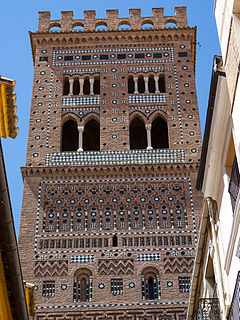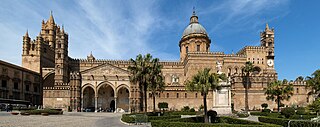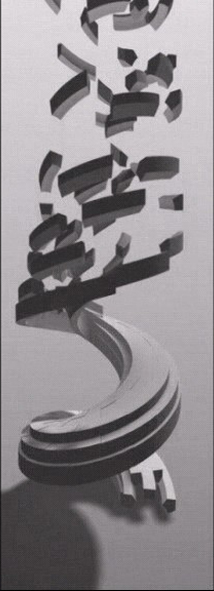
Palermo is a city in southern Italy, the capital of both the autonomous region of Sicily and the Metropolitan City of Palermo, the city's surrounding metropolitan province. The city is noted for its history, culture, architecture and gastronomy, playing an important role throughout much of its existence; it is over 2,700 years old. Palermo is in the northwest of the island of Sicily, by the Gulf of Palermo in the Tyrrhenian Sea.

Alghero, is a city of about 45,000 inhabitants in the Italian insular province of Sassari in northwestern Sardinia, next to the Mediterranean Sea. The city's name comes from Aleguerium, which is a mediaeval Latin word meaning "stagnation of algae".

Valencia is the capital of the autonomous community of Valencia and the third-most populated municipality in Spain, with 789,744 inhabitants. It is also the capital of the province of the same name. The wider urban area also comprising the neighbouring municipalities has a population of around 1.6 million, constituting one of the major urban areas on the European side of the Mediterranean Sea. It is located on the banks of Turia, on the east coast of the Iberian Peninsula, at the Gulf of Valencia, north of the Albufera lagoon.

The Crown of Aragon was a composite monarchy ruled by one king, originated by the dynastic union of the Kingdom of Aragon and the County of Barcelona and ended as a consequence of the War of the Spanish Succession. At the height of its power in the 14th and 15th centuries, the Crown of Aragon was a thalassocracy controlling a large portion of present-day eastern Spain, parts of what is now southern France, and a Mediterranean empire which included the Balearic Islands, Sicily, Corsica, Sardinia, Malta, Southern Italy and parts of Greece.

The City of Arts and Sciences is a cultural and architectural complex in the city of Valencia, Spain. It is the most important modern tourist destination in the city of Valencia and one of the 12 Treasures of Spain.
The culture of Spain is based on a variety of historical influences, primarily based on the culture of ancient Rome, Spain being a prominent part of the Greco-Roman world for centuries, the very name of Spain comes from the name that the Romans gave to the country, Hispania. Other ancient peoples such as Greeks, Tartessians, Celts, Iberians, Celtiberians, Phoenicians and Carthaginians also had some influence. In the areas of language and also religion, the Ancient Romans left a lasting legacy in the Spanish culture because Rome created Hispania as a political, legal and administrative unit. The subsequent course of Spanish history added other elements to the country's culture and traditions.

Villena is a city in Spain, in the Valencian Community. It is located at the northwest part of Alicante, and borders to the west with Castilla-La Mancha and Murcia, to the north with the province of Valencia and to the east and south with the province of Alicante. It is the capital of the comarca of the Alto Vinalopó. The municipality has an area of 345.6 km² and a population of 34,928 inhabitants as of INE 2008.

Mudéjar art, also known as Mudéjar style, refers to a type of ornamentation and decoration used in the Iberian Christian kingdoms, primarily between the 13th and 16th centuries. It was applied to Romanesque, Gothic, and Renaissance architectural styles as constructive, ornamental, and decorative motifs derived from those that had been brought to or developed in Islamic Iberia or Al-Andalus. These motifs and techniques were also present in the art and crafts, especially Hispano-Moresque lustreware that was once widely exported across Europe from southern and eastern Spain at the time.

Llíria is a medium-sized town off the CV35 motorway to the north of Valencia, Spain. Known as Edeta in ancient Iberian times, it is the musical capital of the region. On October 30, 2019, Llíria was declared a Creative City in the category of Music by the UNESCO.

A virtual museum is a digital entity that draws on the characteristics of a museum, in order to complement, enhance, or augment the museum experience through personalization, interactivity and richness of content. Virtual museums can perform as the digital footprint of a physical museum, or can act independently, while maintaining the authoritative status as bestowed by the International Council of Museums (ICOM) in its definition of a museum. In tandem with the ICOM mission of a physical museum, the virtual museum is also committed to public access; to both the knowledge systems imbedded in the collections and the systematic, and coherent organization of their display, as well as to their long-term preservation.

A virtual tour is a simulation of an existing location, usually composed of a sequence of videos or still images. It may also use other multimedia elements such as sound effects, music, narration, and text. It is distinguished from the use of live television to affect tele-tourism.

Palermo Cathedral is the cathedral church of the Roman Catholic Archdiocese of Palermo, located in Palermo, Sicily, southern Italy. It is dedicated to the Assumption of the Virgin Mary. As an architectural complex, it is characterized by the presence of different styles, due to a long history of additions, alterations and restorations, the last of which occurred in the 18th century.

Valencia Cathedral, at greater length the Metropolitan Cathedral–Basilica of the Assumption of Our Lady of Valencia, also known as St Mary's Cathedral, is a Roman Catholic church in Valencia, Spain.

Portuguese architecture refers to both the architecture of Portugal's modern-day territory in Continental Portugal, the Azores and Madeira, as well as the architectural heritage/patrimony of Portuguese architects and styles throughout the world, particularly in countries formerly part of the Portuguese Empire.

Ljubljana Castle is a castle complex standing on Castle Hill above downtown Ljubljana, the capital of Slovenia. It is a key landmark of the town. Originally a medieval fortress, it was probably constructed in the 11th century and rebuilt in the 12th century. It acquired its present outline with an almost complete overhaul in the 15th century, whereas the majority of the buildings date to the 16th and 17th centuries. Initially a defense structure and since the first half of the 14th century the seat of the lords of Carniola, it was since the early 19th century used for various other purposes and today is used as a major cultural venue.

The Cathedral of Cefalù is a Roman Catholic basilica in Cefalù, Sicily. It is one of nine structures included in the UNESCO World Heritage Site known as Arab-Norman Palermo and the Cathedral Churches of Cefalù and Monreale.

The term Norman–Arab–Byzantine culture, Norman-Sicilian culture or, less inclusively, Norman–Arab culture, refers to the interaction of the Norman, Latin, Arab and Byzantine Greek cultures following the Norman conquest of Sicily and of Norman Africa from 1061 to around 1250. The civilization resulted from numerous exchanges in the cultural and scientific fields, based on the tolerance shown by the Normans towards the Greek-speaking populations and the Muslim settlers. As a result, Sicily under the Normans became a crossroad for the interaction between the Norman and Latin Catholic, Byzantine–Orthodox and Arab–Islamic cultures.

The Valencian Museum of Ethnology is a museum located in the city of Valencia, mediterranean Spain. The museum mission defines it as cultural institution primarily devoted to collect, research and communicate the tangible and intangible heritage related to traditional and popular Valencian culture. The mission underlines that the museum also aims to permanently question fundamental aspects of the culture, as the dynamics that built it and force it to evolve, as well as its diversity. Although fundamentally devoted to Valencian cultural identity within a Mediterranean context, this museum also works to give visitors the chance to understand the challenges and dynamics of culture as a whole and from a contemporary perspective.
Attilio Albergoni is an Italian researcher and writer whose work focuses on the Italian military and the city of Palermo during the 1930s and 1940s.

Boštjan Burger is a Slovenian informatician, geographer, a panoramic and VR panoramic photographer and a speleologist. He was founder of the Burger Landmarks website and had retired as computer programmer in the 1990s to become a geographic researcher on the hydrology of waterfalls. He used VR panoramas as a tool in the research of landscapes. He was greatly influenced by geographer Don Bain for documenting the landscape with VR panoramas and Hans Nyberg for his use of QuickTime VR fullscreen panoramas.























